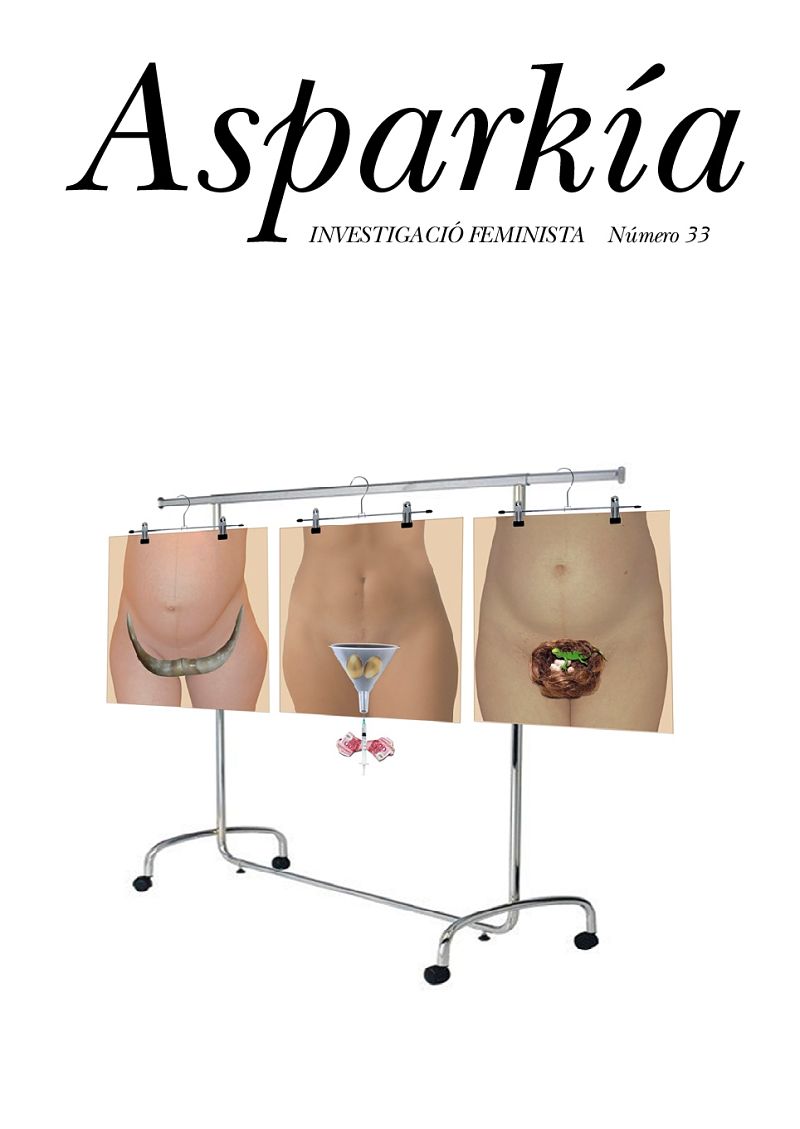Cultura y cuerpo femenino. Aplicación de las categorías orientalistas a la obra Viento del este, Viento del oeste de Pearl S. Buck / Culture and Women’s Body. Orientalism Applied to the Book East Wind: West Wind by Pearl S. Buck
Contenido principal del artículo
Resumen
Resumen
Este artículo tiene por objetivo analizar la novela Viento del este, Viento del oeste de Pearl S. Buck en la que se manifiestan de forma única las tesis sostenidas por Edward Said en su obra Orientalismo. Si bien Said se ha dedicado al estudio de las narrativas de los siglos XIX y primera mitad del XX que tienen por objeto el análisis del choque cultural, no ha extendido sus teorías a la dialéctica masculinidad-feminidad. Sin embargo, es posible reconocer estas mismas categorías epistemológicas orientalistas en la configuración de los relatos constitutivos de la esencia femenina. En este sentido, la novela pone de manifiesto cómo esta configuración de la esencia femenina se realiza a través de un proceso violento y cultural ejercido sobre el cuerpo. En particular, el artículo se centra en tres paralelismos entre las tesis orientalistas y la construcción de la esencia femenina: a) La dicotomía Oriente-Occidente; b) la bipolaridad femenino-masculino; y c) la dialéctica cuerpo-alma, que muestran la perspicaz manera en que la narrativa corporal subyace a la configuración de la autocomprensión existencial femenina.
Palabras clave: Cuerpo, cultura, violencia, alteridad, femenino, dicotomía, orientalismo.
Abstract
This article analyzes the novel East Wind: West Wind of Pearl S. Buck, in which the theses held by Edward Said in his work Orientalism are manifested in a unique way. Although Said has devoted himself to the study of the narratives of the Nineteenth and the first half of the Twentieth centuries that are aimed at the analysis of the cultural clash, he has not extended his theories to the dialectic masculinity-femininity. However, it is possible to recognize these same epistemological orientalist categories in the configuration of the constitutive accounts of the feminine essence. In this sense, the novel shows how this configuration of the feminine essence is realized through a violent and cultural process exercised on the body. In particular, the article focuses on three parallels between the orientalist thesis and the construction of the feminine essence: a) The East-West dichotomy; b) feminine-masculine bipolarity; and c) the dialectic body-soul, which show the insightful way in which the body narrative underlies the configuration of female existential self-understanding.
Key words: Body, culture, violence, alterity, feminine, dichotomy, orientalism.
Descargas
Detalles del artículo
Citas
AQUINO, Sto. Tomás (1947). Suma Teológica, Madrid: Biblioteca de Autores Cristianos.
ARISTÓTELES (1994). Generación de los Animales, Madrid: Biblioteca Clásica Gredos.
ARISTÓTELES (1978). Acerca del Alma, Madrid: Biblioteca Clásica Gredos.
BACON, Francis (2011). La gran restauración (Novum Organum), Madrid: Tecnos.
BEAUVOIR, Simone (1998). El Segundo Sexo, Madrid: Ediciones Cátedra.
BUCK, Pearl. S. (1930). East Wind, West Wind, New York: John Day.
BUCK, Pearl. S. (2002). Viento del Este, Viento del Oeste, Barcelona: Debolsillo.
CAVELL, Stanley (2002). En busca de lo ordinario, Madrid: Frónesis.
CONN, Peter (1996). Pearl S. Buck: A Cultural Biography, Nueva York: Cambridge University Press.
DESCARTES, René (2010). Discurso del Método/ Meditaciones Metafísicas, Madrid: Espasa Libros.
ASHCROFT, Bill, GRIFFITHS, Gareth y Helen TIFFIN (1989). The Empire Writes Back: Theory and Practice in Post-Colonial Literatures, Londres: Routledge.
FOUCAULT, Michel (2012). Vigilar y Castigar, Madrid: Biblioteca Nueva.
HEIDEGGER, Martin (2003). Ser y Tiempo, Madrid: Trotta.
MADRID, Mercedes (1999). La misoginia en Grecia, Madrid: Ediciones Cátedra.
MONTES DONCEL, Rosa Eugenia y María José REBOLLO ÁBALOS (2015). «Lecturas de género y otredad en Pearl S. Buck, Hisako Matsubara y Tsitsi Dangarembga» en Anuario de Estudios Filológicos, vol. 38, pp. 139-161.
TOMMASI, Wanda (2002). Filósofos y mujeres: la diferencia sexual femenina en la Historia de la Filosofía, Madrid: Ediciones Narcea.
SAID, Edward (2003). Orientalismo, Barcelona: Debolsillo.
SHEN, Vincent (2016). «Urban Life-world Manifesting the Dao as inspired by Constructive Realism, Phenomenology and Chinese Philosophy» en Constructive Realism Philosophy, Science and Medicine, Verlag Traugott Bautz.
WALLNER, Friedrich (2016). Constructive Realism Philosophy, Science and Medicine, Nordhausen: Verlag Traugott Bautz.
WALLNER, Friedrich (2013). Acerca del realismo constructivo. Lecciones de Oviedo, Oviedo: Ediciones de la Universidad de Oviedo.


